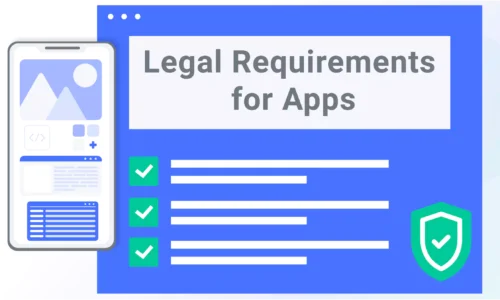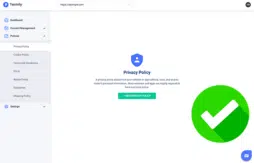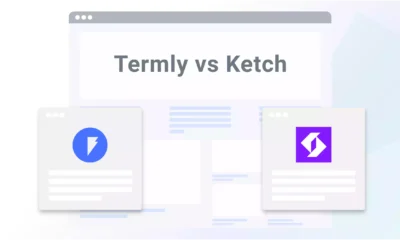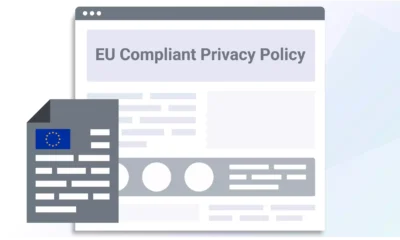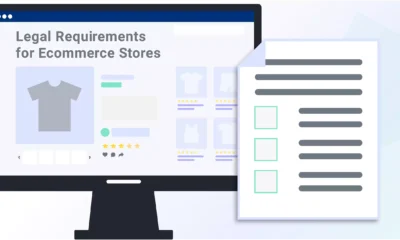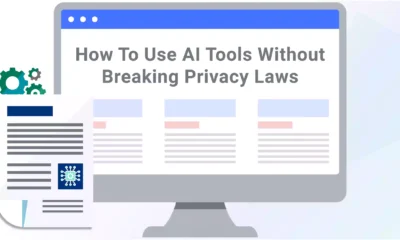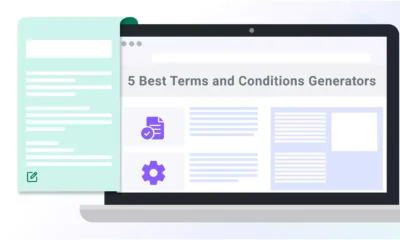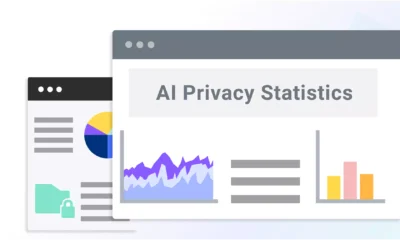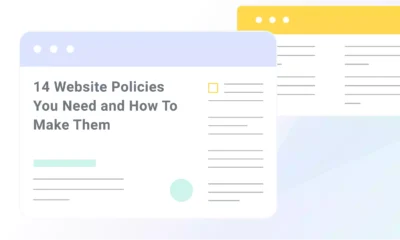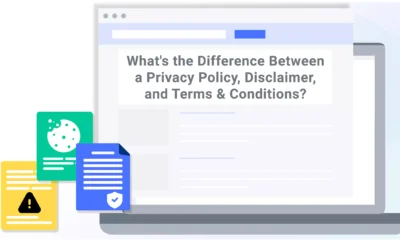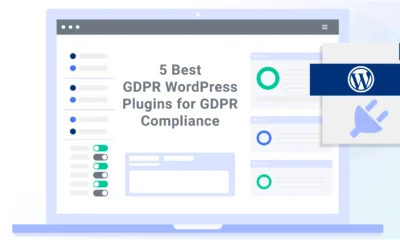These days, creating an app is incredibly easy — with just a few taps of your phone, you can use intuitive app builders to launch your app in minutes.
However, your app needs to comply with various mobile app legal requirements. Therefore, you need to be aware of laws from all over the world that impact your app.
Keep reading to learn about mobile app laws that may impact you and how. While this article doesn’t cover every legal requirement for every industry, it will cover most of the app laws that every small-business owner should know before creating an app.
Key Takeaways
If you’re building an app, you need to be aware of the following mobile app laws, regulations, and best practices:
-
Mobile apps are subject to privacy, security, and accessibility laws like the GDPR, CPRA, and ADA.
-
You must clearly disclose data practices, especially around tracking, third parties, and user rights.
-
Consent is required in many regions — particularly for cookies, marketing, and minors’ data.
-
Strong security measures and accessible design aren’t just best practices — they’re often legal requirements.
-
Industry-specific rules may apply to health, finance, or legal apps, so check what regulations cover your niche.
Mobile App Laws That May Impact You
Here’s a list of mobile app laws and regulations that may impact your company. Note that some regulations, such as the General Data Protection Regulation (GDPR), apply to companies worldwide as long as they meet certain criteria.
| Legislation | Description |
GDPR |
If your app offers services or goods to users in the EU, Norway, the UK, Switzerland, Iceland, or Liechtenstein, you must comply with the GDPR. You must create a privacy policy that establishes how, when, and where your app collects data. |
CCPA |
The California Consumer Privacy Act (CCPA) is a comprehensive data privacy law that establishes how businesses must handle the personally identifiable information of California residents. You must disclose how your app uses cookies and how third parties may use them. This can be done through a designated cookie policy or through a clause in your privacy policy.
The CCPA applies to any for-profit company that does business in California — regardless of where it’s based — if it meets any of the following criteria:
|
CPRA |
The California Privacy Rights Act (CPRA) , an expansion of the CCPA, strengthens privacy protections for California residents and introduces new obligations for businesses — including app developers — that collect, share, or process personal data.
Like the CCPA, the CPRA applies to for-profit businesses that operate in California or serve California residents and meet any of the following thresholds:
|
COPPA |
The Children’s Online Privacy Protection Act (COPPA) applies to any company worldwide that collects personal information from children under the age of 13 who live in the US. This law protects children’s privacy by requiring apps to obtain consent from parents before collecting personal information from minors under the age of 13. |
CalOPPA |
The California Online Privacy Protection Act (CalOPPA) applies to your app if it’s located in California or serves California residents. You must use the word “privacy” when linking to your privacy policy from your app’s homepage. You also need to put the last effective date of your privacy policy at the top of your privacy policy page so users know which version of your policy they’re reading. |
EU Cookie Law |
The ePrivacy Directive, also known as the EU Cookie Law, requires apps to have a cookie policy and obtain consent from users before retrieving or storing personal information on a tablet, computer, or smartphone. It aims to inform customers of their privacy rights and show them that they can make an informed decision regarding whether they should continue providing personal information. The EU Cookie Law applies as long as:
|
Eraser Button Law |
Also known as the Eraser Button Law, the Privacy Rights for California Minors in the Digital World legislation applies to apps that allow Californian minors under the age of 18 to post content and register accounts. This law requires these apps to inform users under the age of 18 that they have the ability and right to remove the information or content they have submitted at any time. |
ADA |
The Americans With Disabilities Act (ADA) requires apps to be accessible to users with disabilities. It applies to companies with 15 or more employees. |
List of Mobile App Legal Requirements
When creating your app, you need to make sure it complies with relevant legal requirements, including the following:
Data Privacy and Collection Requirements
Data privacy laws like the GDPR and CPRA have many data privacy and collection requirements.
Privacy Policies
Many laws that impact apps require you to create a privacy policy to inform users about their privacy rights and how you collect, use, and store their data.
Although requirements for privacy policies may vary depending on what laws apply to your mobile app, most require you to do the following:
Explain what personal information you collect from users
Typical examples include:
- First and last name
- Username
- Password
- Email address
- Address
- Phone number
Define how you share and use data, including whether you sell data
For example, this is how WhatsApp defines the way it uses data:

Describe how users can control their data
Be as detailed as possible when writing out this part. As an example, here’s how TikTok organized this section of its privacy policy:

Disclose whether you use third-party services
The GDPR and CCPA define third parties as individuals or companies other than the subject that you have authorized to process personal data. Examples include cookies and social media features like Facebook’s Like button.
This is how Spotify discloses its third-party services:

Inform app users on whether and how they’re being tracked
If your app uses cookies or other tracking mechanisms to analyze user activity, you need to disclose:
- The fact that you are tracking users
- How these tracking mechanisms work
GDPR- or CCPA-specific requirements
If the GDPR applies to you, you also need to:
- Appoint a data protection officer (DPO): The GDPR requires appointing a DPO in certain circumstances. So if your mobile app falls under one of these categories, you need to post your DPO’s contact details in your privacy policy.
- List your EU representative’s contact details: If your company is located outside of the EU and you’re a data controller or processor, you must appoint an EU representative for your company. You are excluded from this requirement if your processing of EU personal data is occasional, does not include special categories of personal data or data relating to criminal convictions and offenses, and is not considered a high risk to the rights and freedoms of natural persons. Include your representative’s full name and contact information in your mobile app privacy policy so EU consumers can contact them as needed.
- Disclose whether and how you’re using an automated decision-making system: If your mobile app uses an automated decision-making system, disclose how you set it up, how it works, and what the possible consequences of using this system are.
If the CCPA applies to you, you need to include all of the elements above and provide a way for consumers to opt out of having you sell their private data.
Once a consumer has made that request, you must wait a minimum of 12 months before asking them to opt back into letting you sell their personal information.
“Do Not Share My Personal Information” Link
Additionally, if the CCPA applies to you, you need to prominently and explicitly display a “Do Not Share My Personal Information” link somewhere in your app and include it in your privacy policy. This link must lead to a form or webpage where users can opt out of the sale of their personal information.
Consent Requirements
If your app markets or could potentially market to EU consumers, you must follow the GDPR and the EU Cookie Law’s consent and transparency standards. These regulations require users to give explicit and informed consent before your app can process their data.
However, the CCPA doesn’t require a user to give proactive or affirmative consent for data collection. This difference in legislation means your app can collect, store, and use cookie data immediately without user confirmation, as long as both of the following are true:
- Your cookie policy is posted in a prominent area of your app.
- Users are given clear options to accept, reject, or customize their cookie preferences.
You must also give them an explicit and easy way to opt out of data collection at any point.
The CPRA requires businesses to obtain opt-in consent before selling or sharing the personal information of users under the age of 16. For users under 13, verifiable parental consent is required — a requirement also mandated under COPPA.
Data Security Requirements
According to the Federal Trade Commission (FTC) Fair Information Practice Principles, you need to define your app’s security measures for protecting consumers’ data and deleting old data.
These measures are intended to lower the risk of cybersecurity issues such as data breaches and hacks.
For example, you can conduct mobile app pentesting to identify and address potential vulnerabilities in your application. When you test the app for security weaknesses, it ensures that your mobile app complies with industry standards and keeps users’ data secure.
Your security measures will depend on how much data you collect and how sensitive this data is.
For instance, Amazon explains that it protects users’ personal information using encryption software and protocols. It also follows the Payment Card Industry Data Security Standard (PCI DSS) for handling credit card data:

Accessibility Requirements
While the ADA does not explicitly reference apps, U.S. courts have interpreted its provisions to apply to digital services, including mobile apps.
You can make your app accessible by:
- Using larger fonts
- Using clear contrast between backgrounds and fonts
- Providing web reading tools
- Providing transcripts
- Giving written descriptions of images
In the same vein, Canada has provincial laws that require apps from private businesses to be accessible.
For instance, the Accessibility for Ontarians With Disabilities Act (AODA) requires apps from private businesses to be accessible. It requires all public sector organizations as well as nonprofit and private organizations with more than 50 employees to make their apps and digital content accessible to people with disabilities.
In Europe, the EU Web Accessibility Directive requires public sector organizations across the EU to ensure that their mobile apps are operable, understandable, robust, and perceivable.
Ecommerce Requirements
If you operate an ecommerce app, you must employ security and safety measures to protect your users’ private information.
As such, you need to do the following:
- Use mobile-specific solutions: Add phone verification to your app to ensure that users are who they say they are. You can add another layer of protection with additional tokens or authentication methods. While this may not be enough to stop advanced hackers, these tokens can stop most threat actors from performing malicious actions such as spoofing.
- Use Transport Layer Security (TLS): TLS implements end-to-end encryption for your app, preventing people from reading users’ messages even if they send them through unencrypted channels — for example, a coffee shop’s Wi-Fi access point with no password.|
- Refresh sessions: By shortening the life of access tokens to a few minutes and adding refresh tokens, you can prevent attackers from gaining access to your app. Even if they acquire the access token, it will soon expire. Users can also use refresh tokens to get new access tokens.
- Include log-out requests: You can invalidate tokens that are no longer used by telling the back end of your app that you’ve closed the session.
- Avoid sending out too much information: You can make it harder for attackers to get personal information by sending out less information or splitting data into several requests. If the threat actor intercepts one request, the stolen data may not be detailed enough to cause any harm. For example, the intercepted information may contain only a birth date, but no other identifying markers.
Intellectual Property Rights
Your app has several intellectual property rights, including:
- Registered trademarks, such as your branding and logos
- Copyrights for your design, text, data, graphics, and original images
In many jurisdictions, like the US and UK, copyright protection immediately vests in a work as long as it meets certain criteria. As such, you can take action against other apps, sites, and individuals who use your content without permission.
To prevent others from using and stealing your content, consider:
- Placing watermarks on images to remind people that the images belong to you
- Including copyright notices
- Adding a free Digital Millennium Copyright Act (DMCA) badge to your app — if someone steals or misuses your DMCA-protected content, the DMCA will help you take down your content for free
You should also remember to respect others’ intellectual property rights. As such, you should never reuse or copy someone else’s content unless you have explicit permission from them to do so.
Copyright and Plagiarism Requirements
Make sure that all of your app’s content is original. If you want to post or repost an image, copy, or any other material that someone else created, you need to:
- Get proper authorization from the original creator to use it
- Link back to the original creator
Otherwise, your unauthorized and unattributed use of another app’s content will be flagged for copyright infringement or plagiarism.
Content Licensing and Attribution
If you want to use professionally produced content for your apps, such as videos, graphics, music, tables, and photos, ensure that you have the right content licensing for it. You must provide attribution as needed.
Anti-Spam Laws
Your app also needs to follow anti-spam laws. Otherwise, malicious actors may use your app to send users spam.
Spam refers to irrelevant or unsolicited emails sent en masse to a list of people. Examples include unsolicited marketing emails, fraudulent messages, computer viruses, and scams.
In the US, the Controlling the Assault of Non-Solicited Pornography and Marketing Act (CAN-SPAM) gives recipients the right to opt out of unwanted emails.
In contrast, the GDPR has strict anti-spam app clauses that require you to ask recipients to opt into marketing messages before sending them anything, even if those users are already your customers.
Disclaimers
Your app should also include disclaimers. These can be part of your terms and conditions, or they can be on their own page.
The most common app disclaimer is used to limit an app creator’s responsibility for actions users take based on the app’s content. Other disclaimers depend on your app and your industry. Here are some examples of what these disclaimers can do:
- Establish that your app is for informational purposes only and does not constitute professional advice
- State that users can’t use your copyrighted content without explicit permission and attribution
- If you have a legal app, state that the app doesn’t establish an attorney-client relationship and that none of the content on the app constitutes legal advice
Disclosures
Disclosures are important from an ethical and legal perspective. The FTC requires you to inform users of conflicts of interest if you have an audience that relies on your expertise or advice.
Here are some situations in which you should have a disclosure page on your app:
- If you’re receiving compensation in any form for including anything on your app, such as a link, a video, or an article
- If you’re running contextual ads such as those through Google AdSense
- If you’re participating in affiliate marketing programs
Requirements for Apps in Specific Industries
Besides the mobile app legal requirements covered above, some industries must follow specific requirements. These include the following.
HIPAA Requirements for Health Apps
If your app deals with health information, you must comply with the Health Insurance Portability and Accountability Act of 1996 (HIPAA).
Specifically, you need to follow:
- The HIPAA Privacy Rule: safeguards protected health information (PHI)
- The HIPAA Security Rule: protects electronic protected health information (e-PHI)
- Rules regarding notifications for health care data breaches
You also need to inform patients about their rights over their health care data.
ABA Requirements for Legal Apps
If you’re a lawyer, you need to follow the American Bar Association’s Rules of Professional Conduct, which limit what attorneys can say on apps.
For example, you can’t:
- Claim that you are an expert or specialize in a particular area of law unless you have a special accreditation from a state-regulated body
- Make promises about legal outcomes
- Make unsubstantiated claims or misrepresentations about how you are the best in the entire state or city
Financial App Requirements
Financial apps have unique requirements because they are more likely to be hacked by threat actors.
That’s why app laws like the Gramm-Leach-Bliley Act (GLBA) specifically require financial apps to establish appropriate standards for ensuring the confidentiality and security of their customers’ personal information, such as their:
- Names
- Credit scores
- Income levels
- Bank account numbers
Additionally, the Federal Financial Institutions Examination Council (FFIEC) suggests using encryption to mitigate the risk of alteration or disclosure of sensitive information.
Contractor App Requirements
If you’re a contractor or subcontractor, you should put your credentials on your app. Check your local licensing board to see if there are any requirements for displaying your contracting license ID on your app.
File-Sharing App Requirements
File-sharing apps may have strict requirements depending on your jurisdiction. For example, sharing files without the copyright holder’s consent is illegal in Germany. Even a single copyrighted file downloaded through a file-sharing app can trigger a fine of 1,000 euros or more.
Not Legally Required but Recommended
The following elements aren’t legally required, but they can significantly improve the customer experience and make it easier for you to build a rapport with users.
About Page
You should create a robust about page that gives users a look into who you are and why they should trust you. A good about us page will make your app more transparent and provide information that users might want to know before trusting you.
Contact Information
Contact information, including social media accounts, is a vital part of your app. It allows users to reach out to you if they have any questions or concerns.
Terms of Use
You should also include a terms of use page to establish broad guidelines for using your app.
Having a well-written terms of use page doesn’t just keep your app safe for everyone — it’s also the right thing to do. Your customers deserve to know when you can terminate their accounts and what they can and can’t do.
Here are some components you should always include:
- Acceptable-use policy: This section lists all the prohibited uses of your app, such as harvesting data, illegal actions, harassing others, and stealing copyrighted information and images from the app.
- Your rights and ownership: This section establishes that you own all of the intellectual property rights to the app’s content, except for any user-generated content. You should also state that visitors and users of the site may not use any of this information without permission.
- Termination and modification: This part details that you can terminate any user’s account at any time at your discretion and without notice.
End-User License Agreement (EULA)
You should also include an end-user license agreement (EULA).
EULAs are legally binding contracts that require users to agree to their terms before those users can download and install your app.
Although they can be easily mistaken for terms-of-use agreements, EULAs are distinct. Instead of setting broad guidelines for users to follow, EULAs give app users the right to download, install, and access an app.
They also establish guidelines for how users should interact with the software specifically. For example, EULAs typically restrict users from:
- Copying or selling the app
- Translating the app and passing it off as their own
- Using the app for illegal activities, such as spreading viruses, theft, and fraud
Shipping, Return, and Refund Policies for Ecommerce Apps
If you have an ecommerce app, you should also consider adding a shipping policy, and a return & refund policy. Well-written policies will show that you care about your customers and whether they’re satisfied with your goods and services.
Shipping policies outline how and when your company ships products once users place an order through your app, while return and refund policies outline how users can return items and secure refunds, respectively.
Staying on top of mobile app legal requirements isn’t just about reducing risk — it’s about building trust with your users from the very start. From data privacy to accessibility, following the laws that apply to your app helps you create a product that’s not only functional, but responsible.
Not sure where to start? Use Termly’s free legal policy generators to create customized privacy policies, terms and conditions, disclaimers, and more — tailored to your app’s needs.

